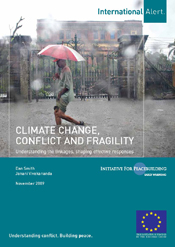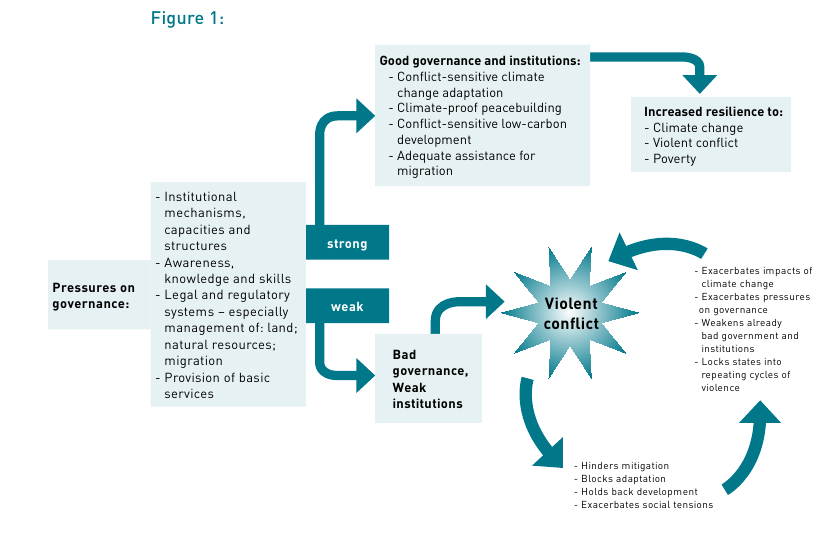 Rebecca Sargent at a piece of conflict has been reading CLIMATE CHANGE, CONFLICT AND FRAGILITY - Understanding the linkages, shaping effective responses (pdf), a report by Dan Smith and Janani Vivekananda of International Alert (It's from November 2009 and a copy of it has been waiting on my hard disk for me to read it for quite a while now. But why not check out Rebecca's take on it right away?).
Rebecca Sargent at a piece of conflict has been reading CLIMATE CHANGE, CONFLICT AND FRAGILITY - Understanding the linkages, shaping effective responses (pdf), a report by Dan Smith and Janani Vivekananda of International Alert (It's from November 2009 and a copy of it has been waiting on my hard disk for me to read it for quite a while now. But why not check out Rebecca's take on it right away?).
Part one - Exacerbation of conflict in fragile states during climate change
Part two - Policy and adaptation recommendations for reducing conflict risk
Rebecca's final comment isn't from the report:
[caption id="attachment_2517" align="aligncenter" width="550" caption="Figure 1, page 10, chapter 2.3 Climate change in fragile states."] [/caption]
[/caption]
The report exists in a context of development aid hence to some degree focus on how foreign aid from rich countries should change. From the Conclusion:
The over all conclusion is summed up in five bullet points:
Adaptation to climate change needs to be conflict-sensitive.
Peacebuilding needs to be climate-proof.
A low-carbon economy must be supportive of development and peace.
Poor countries’ social capacity to understand and manage climate and conflict risks must be strengthened.
Climate-related migration should be planned for and coped with peacefully.
Recommended Comments
Join the conversation
You can post now and register later. If you have an account, sign in now to post with your account.